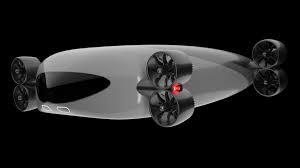Home » Technology »
The Answer to Urban Air Mobility Congestion
Could it be a "magic" flying bus?

Heads’ up, Airbus. There’s a new air bus coming to town. Actually, it’s coming to downtown, perhaps a downtown near you. Kelekona, a New York City-based start-up, has set its sights on developing a mass transit eVTOL as big as a city bus. With a payload of 10,000 lbs. (about 4500 kg), Kelekona is aiming to design and manufacture an eVTOL for the higher densities of some of the world’s most-congested cities. The 40-seat Kelekona air cus would be designed to transport passengers, cargo, or medical patients from and into the heart of major metropolitan areas, such as New York, Los Angeles, London, or Paris.
Mass Transit in the Air
Speaking to Digital Trends, founder Braeden Kelekona explained: “We have a really small airspace in New York. It never made sense to us to create a small aircraft that was only able to carry up to six people. You have to have the kind of mass transit we rely on here in the city. It makes sense to try to move as many people as possible in one aircraft, so that we’re not hogging airspace.”
Whereas many of the urban air mobility industry’s visionaries foresee air taxis traversing city skies, Kelekona believes that, while that may relieve congestion on the ground, it’s bound to add to the congestion overhead.
To remain competitive, Kelekona hopes his airbus will cost passengers about the same as a train ride. The first route is planned from New York City to the Hamptons on Long Island. A ticket for a 30-minute ride should cost about US$85.
Planned routes could include Los Angeles-San Francisco, New York-Washington, D.C., and London-Paris. Because it’s an eVTOL, getting closer to the heart of the city is feasible, avoiding a trip to the airport on both ends of your travel.
Other Uses for the Kelekona Air Bus
Configured for cargo, the Kelekona could accommodate 12-24 shipping containers or about 10,000 lbs. But, that’s a lot of pay load. And, of course, the higher the payload, the more battery power the aircraft requires. Consequently, Kelekona envisions a 3-D printed composite and aluminum body and eight thrust vectoring fans with propellors that can change position as needed for takeoff, forward flight, and landing. The battery pack will need to generate 3.6MWH of power and be easily swapped out for a fresh power-pack. To achieve that, Kelekona says he is designing the aircraft from the battery pack up.
Other companies, including the UK’s GKN Aerospace and an elevated train being developed in China, are also looking to solve the eVTOL passenger/cargo sky congestion problem the future forebodes.
Pending FAA approval, Kelekona hopes to begin with cargo-only service, then add passenger service in 2024.
Want to continue to stay up-to-date about the latest developments in the eVTOL industry? Subscribe to AeroCar Journal now. It’s FREE (for a limited time)! Join us on Twitter for the latest news, analysis, and insight about the eVTOL industry. AeroCarJ


